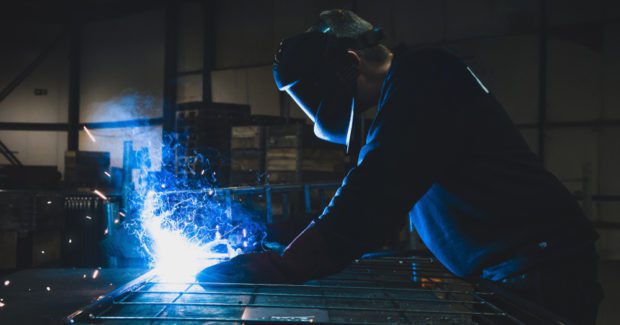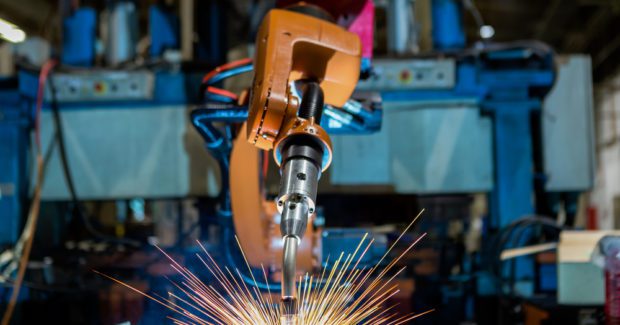Exposing the Dangerous Myths About Welding Equipment and Machinery
Plenty of risks accompany the operation of welding equipment and machinery – but misinformation can increase the chances for poor decision-making and hazardous mistakes. Westermans Intl. Technical Director Mark Reaney calls out some industry myths and offers tips to help you operate as safely as possible.
Posted: March 27, 2020
By Mark Reaney
Any kind of metal fabrication or welding can pose serious risks, and it’s important to know how to properly use any machinery to avoid injury or death. Unfortunately, myths and misinformation run rampant in the industry, and these can lead to workers making poor decisions or dangerous mistakes.
Let’s take a look at some of these misconceptions to make sure you and your employees stay as safe as possible while operating welding equipment and machinery.
Myth #1: New machines are always safe
It makes sense to believe that the newest machines are the safest, as they’ll be manufactured in line with the most up-to-date safety regulations. However, it’s not safe to assume that just because a machine is new, it’s safe.
For one thing, different countries have different manufacturing and safety standards. This means that certain safeguards that one country’s regulating body may view as mandatory may not be legal requirements in others.
It’s also important to remember that all machinery requires consistent maintenance and upkeep to ensure it remains in good working order. While new machines may take longer to wear or break down, all parts and safeguards should always be checked every use to maintain consistent safety.
Myth #2: Old machines are exempt from new safety standards
There’s a common belief that older machines built prior to the creation of certain safety measures are simply grandfathered in and don’t need to comply with the latest regulations. This is not true at all and is an extremely dangerous misconception that can lead to injury.
Older welding machinery can be a great option, but needs to be purchased from a reputable supplier that ensures it meets the most recent safety standards. This, of course, means that dealers need to keep up to date with the addition of new safety standards in the welding industry. The description itself should contain the make and model of the welder, how old it is, what condition it is in, and what, if any, accessories come with it.
All machines should be regularly maintained and serviced by a technical engineer, and if a fault or non-compliance is found, it should be removed from use until it is able to be repaired or updated.
When you’re looking to buy a used welding machine, you should also look for machines that are in good condition with detachable, easy to replace parts, particularly consumables that wear out. For instance, MIG welders use a torch – this is a consumable and will need to be replaced to achieve the best results.
If you are unable to bring older welding machines up to the standard required, they must be replaced to ensure the safety of all workers.
Myth #3: HSE guidelines and ACOPs are advice, not law
There’s some truth to this, but it’s worth looking at in more detail.
The UK’s Health and Safety Executive’s website says: “Following the guidance is not compulsory, unless specifically stated, and you are free to take other action. But if you do follow the guidance you will normally be doing enough to comply with the law. Health and safety inspectors seek to secure compliance with the law and may refer to this guidance.”
With regards to Approved Codes of Practice (ACOPs), HSE states that each Code “gives practical advice on how to comply with the law. If you follow the advice you will be doing enough to comply with the law in respect of those specific matters on which the Code gives advice. You may use alternative methods to those set out in the Code in order to comply with the law.”
However, it goes on to say that “the Code has a special legal status. If you are prosecuted for breach of health and safety law, and it is proved that you did not follow the relevant provisions of the Code, you will need to show that you have complied with the law in some other way or a Court will find you at fault.”
While some elements of these guidelines are not technically legal requirements, the risk of injury, death or prosecution means that it’s not worth the risk to ignore them.
Myth #4: Robotic welding systems are wasteful due to rejected parts
There can be a steep learning curve when it comes to using robotic welding systems, and many people fall foul by thinking the need to rework or reject parts is just a standard part of how they operate.
You can drastically reduce the wasted material, time and cost of rejected parts by investing in proper equipment training. This training may be part of your welding system package and should be regularly updated to ensure efficiency.
Having a member of staff with welding experience who is fully trained in the fine-tuning and calibration of the system is essential to ensure that you get the best out of the robotic welder. With proper programming, accurate adjustments and regular maintenance, robotic welding systems can be a highly efficient addition to your shop.

















